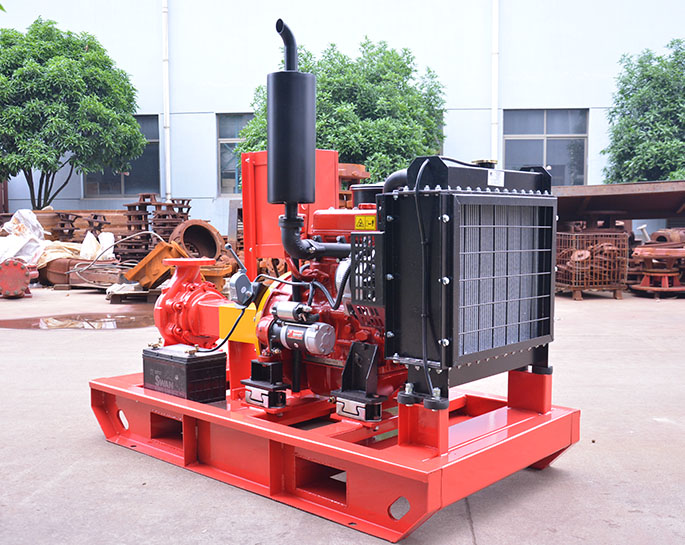What checks are there before the fire pump starts?
Before starting a fire pump, it's essential to perform a series of checks to ensure that the pump is in proper working condition and ready to provide the necessary water flow and pressure in case of a fire emergency. These checks help prevent malfunctions and ensure the reliability of the fire protection system. Here are the key checks to perform before starting a fire pump:
-
Visual Inspection:
- Inspect the fire pump and its surrounding area for any signs of damage, leaks, corrosion, or obstructions.
- Ensure that the pump area is clear of debris, tools, and any objects that could interfere with the pump's operation.
-
Control Panel Check:
- Check the pump's control panel for any alarms, alerts, or error indicators.
- Verify that the panel displays the correct pump status, such as "Ready" or "Standby."
-
Valve Position:
- Check the positions of inlet and outlet valves. Ensure that inlet valves are open and outlet valves are properly set.
- Verify that any isolation valves, pressure relief valves, or check valves are in the correct positions.
-
Suction Piping:
- Inspect the suction piping for any clogs, blockages, or debris that could hinder water flow.
- Ensure that the strainer at the end of the suction pipe is clean and free from obstructions.
-
Seals and Gaskets:
- Inspect seals, gaskets, and fittings for any signs of wear, leaks, or deterioration. Replace any components that show signs of damage.
-
Electrical Connections:
- Ensure that all electrical connections, including wiring and terminals, are secure and properly connected.
- Check for any exposed or damaged wires.
-
Belt Drive Systems (If Applicable):
- If the fire pump is driven by a belt, check the condition of the belt for proper tension, alignment, and signs of wear.
-
Lubrication:
- Ensure that any components requiring lubrication are properly lubricated according to manufacturer guidelines.
-
Cooling System (If Applicable):
- If the pump has a cooling system, verify that it's functioning properly and that cooling water is circulating adequately.
-
Instrumentation:
- Check pressure gauges, flow meters, and other instrumentation for accuracy and proper calibration.
-
Emergency Shutdown Test:
- Test the emergency shutdown or stop function to ensure that it works as intended. This may involve momentarily starting the pump and then stopping it using the emergency shutdown switch.
-
Backup Power Source:
- If the fire pump has a backup power source, such as a generator, ensure that it's operational and ready to provide power if needed.
-
Documentation and Logs:
- Review the pump's maintenance and testing logs to ensure that routine maintenance has been performed and that the pump has been tested regularly.
-
Personnel Safety:
- Make sure that any personnel involved in the pump startup process are wearing appropriate personal protective equipment (PPE) and following safety protocols.
-
Start-Up Procedure Review:
- Familiarize yourself with the proper start-up procedure for the specific fire pump system you are working with. Follow the manufacturer's guidelines and any specific instructions provided for your system.
Always refer to the manufacturer's documentation and guidelines for the fire pump system you are working with, as procedures may vary depending on the model and design. If you're not experienced with fire pump systems, it's best to involve qualified professionals to perform these checks and procedures.


.png)
.png)

.png)


